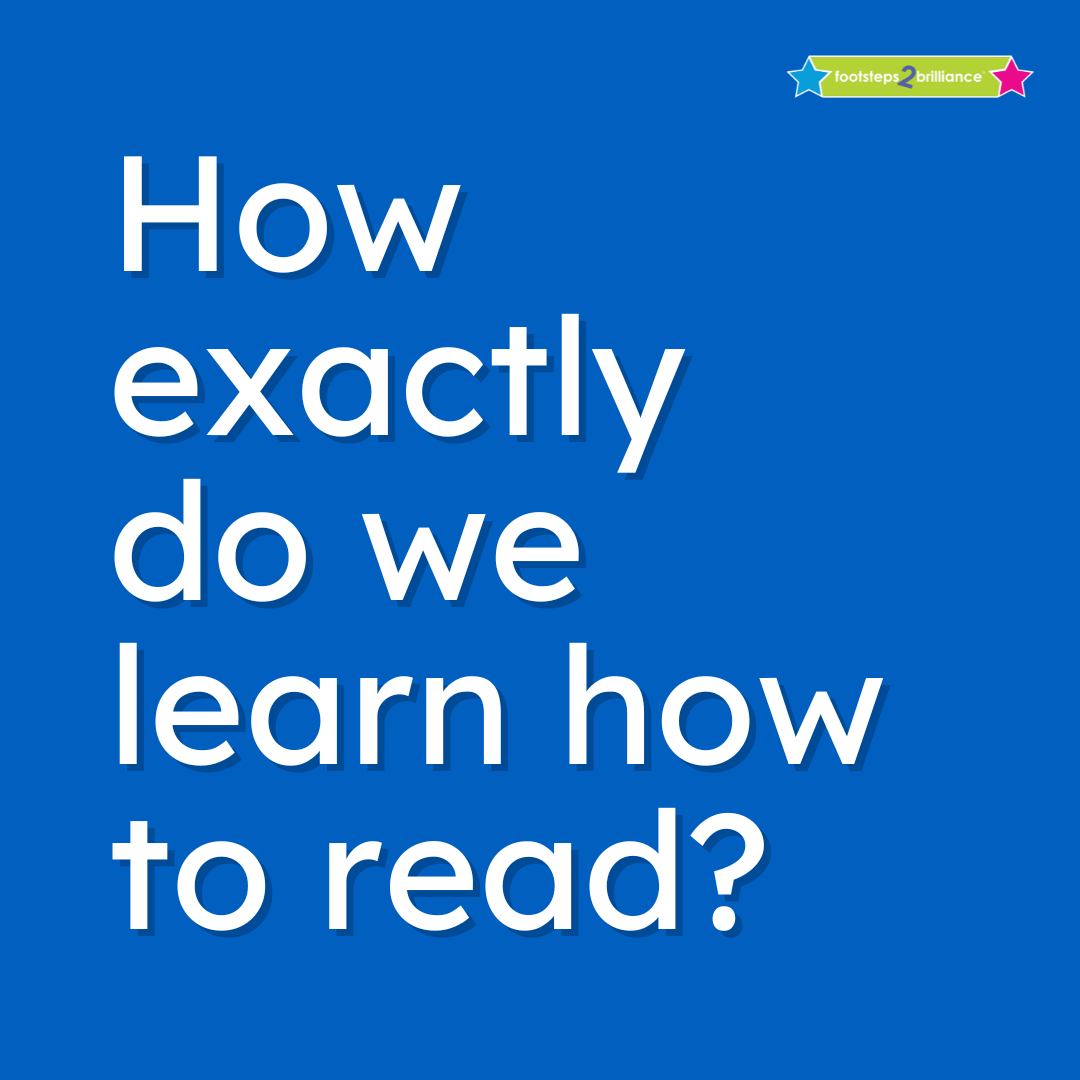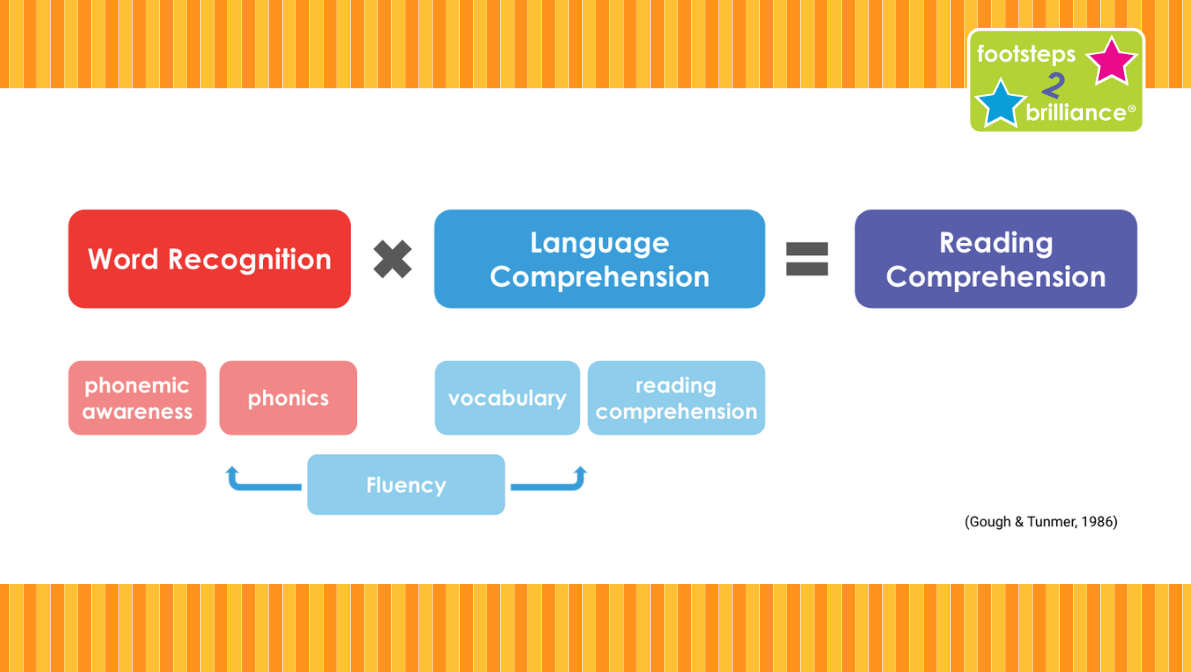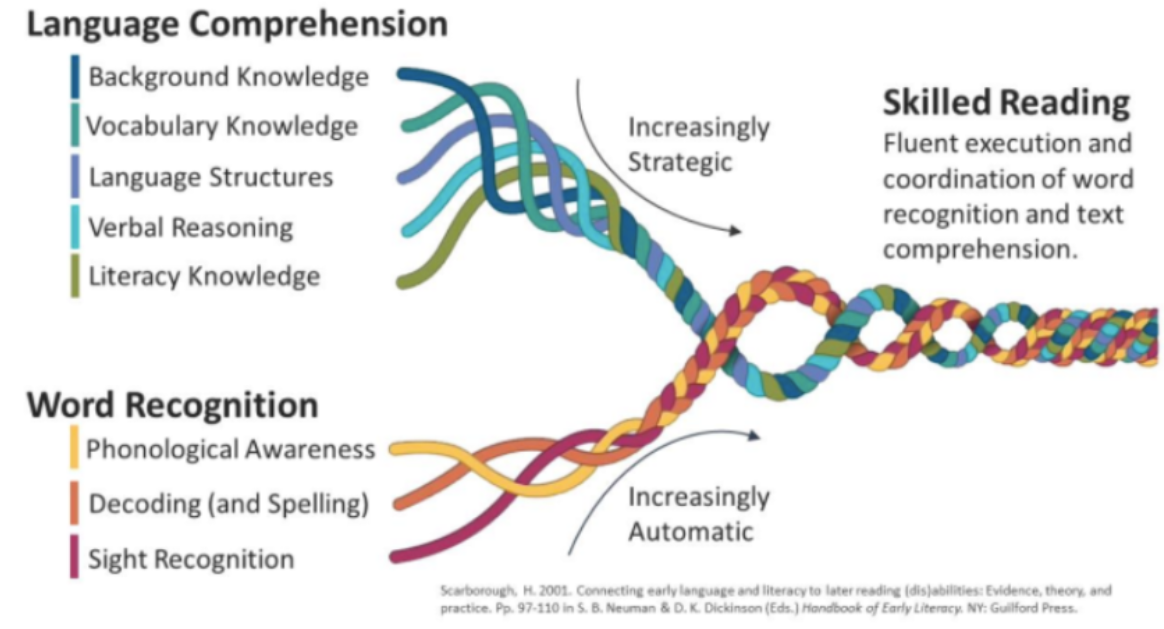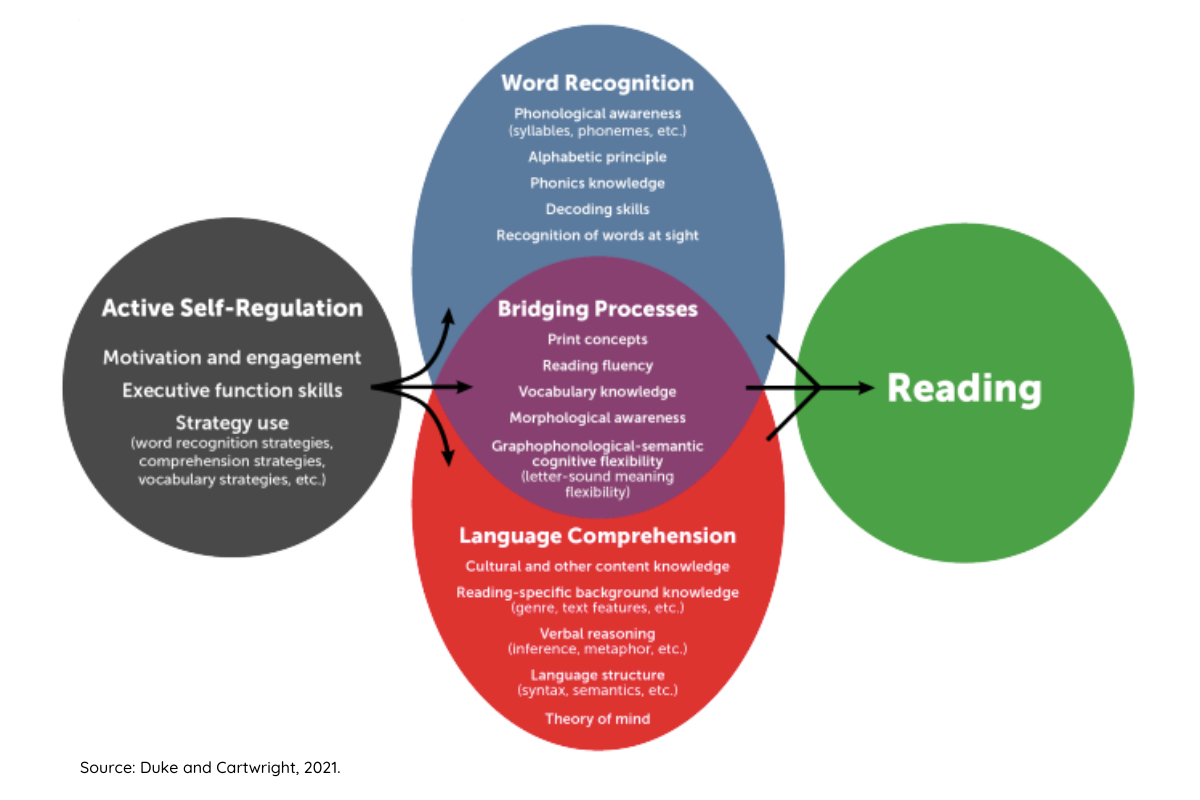
We know that learning to speak and learning to read are not the same in the brain. Learning to speak is innate, while learning to read is not. Reading must be systematically, explicitly taught to bridge the connection between oral language development and reading proficiency. In this installment of our Teacher Tip Tuesday series: Demystifying the Science of Reading, we’ll discuss how decades of reading science research describes the act of learning to read. We’ll also discuss why even the most successful teachers can benefit from science of reading research and research-informed practices.
Research informed views of learning to read
There are several models of how reading skills develop that have been proposed by reading science researchers. The following three models are most widely known and recognized: the Simple View of Reading, the Reading Rope, and the Active Model of Reading. A basic understanding of these models is important, since they can guide our decisions about which reading programs and instructional practices are promising and are in line with how children read.
Gough and Tummer’s Simple View of Reading (1986) says that successful reading comprehension occurs when a child can accurately read words (word recognition) and interpret meaning from what they read (language comprehension).
Scarborough’s Reading Rope (2001) shows how the complex components of reading are intertwined like the strands of a rope. To be a fluent reader, this model says we must be automatic in some aspects of reading, like decoding, and strategic in other parts, like matching their vocabulary knowledge to the words we read. It is the combination of automatic and strategic processes that result in fluent, accurate reading with comprehension.

Duke and Cartwright expand upon prior models of reading in their Active Model of Reading (2021). They found that while some processes may be distinctly related to word recognition and others to language comprehension, many processes aid in the development of both skills. These bridging processes that overlap between word recognition and language comprehension, added to other important processes, such as theory of mind and cultural knowledge, contribute significantly to how we learn to read.

What does a successful, research-informed teaching practice look like?
There is no one-size fits all approach to teaching reading. “Backed by research” doesn’t mean that one approach is the only way; it means a method, approach, or model shows benefits in comparison to other approaches. Spending instructional time in areas that have been shown to lead to reading achievement, specifically word recognition and language comprehension, is the key to success. High-quality instruction in phonological awareness, phonics, reading fluency, vocabulary, and comprehension can help children develop into successful readers. The emphasis of instruction changes as a developing reader increases in skill and ability. Phonics instruction in Pre-K looks different from phonics instruction in 3rd grade, for example.
Structured Literacy is a research-based approach that prepares students to decode words in an explicit and systematic manner. There is substantial evidence that this approach is effective for all readers. Three teaching principles guide how structured literacy instruction can be implemented within the classroom:
1. Systematic and cumulative instruction
2. Explicit instruction
3. Diagnostic instruction
Systematic instruction involves organizing materials from basic to complex concepts in a logical sequence. Cumulative instruction builds on previously learned concepts, requiring mastery of lower-level skills before progressing to higher-level ones.
Explicit instruction involves intentional and interactive teaching of all concepts, rejecting the assumption that students will naturally deduce them. Research supports the positive impact of explicit literacy instruction, particularly for beginning readers at risk of struggles.
Diagnostic teaching involves assessing students’ strengths and weaknesses to personalize instruction and continuously measuring progress for adjustments.
Implementing these research-supported methods supports developmentally appropriate instruction, allowing students the necessary time to master skills and make substantial growth in literacy.
How does Footsteps2Brilliance align with the science of reading for all learners?
With our synthetic phonics approach, students hear and pronounce a target phoneme so that they can link that sound to a written letter or letters (grapheme). In our Clever Kids University program, letter sounds are presented to students in a research-based sequence where the first sounds learned are the easiest for students to discriminate. Students work at their own pace through the phonics sequence. With each lesson, students learn targeted letter sounds, word patterns, and sight words in order to read a decodable book and write about it. Children immediately apply phonics skills they are learning.
Phonological and phonemic awareness instruction in Footsteps2Brilliance ensures that students have the ability to recognize (1) words that rhyme, (2) the initial sounds in words, and (3) the discrete sounds in words. Games are presented in a research-based order that starts with understanding chunks of sounds in syllables and rhyming. Next, students begin to explore initial sounds. Students isolate initial, medial and final sounds, and work on blending, and segmenting. Finally, students practice adding and deleting sounds in words.
Unlike workbooks or activity sheets, Footsteps2Brilliance offers students a way to actively engage with language, sounds, and print. For example, Footsteps2Brilliance has invented a series of multi-sensory phonics games based on Elkonin boxes, where children explore sounds, build words, and blend sounds using interactive phoneme tiles. The tiles represent graphemes rather than just letters, so each tile plays audio as the students work with them. These activities create a powerful experience for children to understand and use the alphabetic principle. Students can also touch any word or picture in order to hear it spoken. Some activities also have children record themselves speaking or reading, and students can listen to their recording.
As students using the Footsteps2Brilliance programs read, play, and write, their performance and proficiency are automatically monitored. There is no need for teachers to interrupt important instructional time with frequent assessments. Using sophisticated scoring algorithms that evaluate a student’s performance within the context of millions of scores nationwide, we are able to present teachers with the insight they need to easily differentiate instruction, target interventions, and monitor progress. With Footsteps2Brilliance, teachers and administrators have ongoing real-time data analytics to monitor academic achievement, classroom and home use, and family engagement.
Students experience rich instruction and practice targeting background knowledge and Tier 2 vocabulary words in both English and Spanish. Footsteps2Brilliance designers referenced the work of Margaret G. McKeown and Isabel L Beck, in addition to reviewing the Fry and Education Development Laboratory’s (EDL) word lists to ensure that targeted vocabulary is both rigorous and high-utility. Vocabulary exposure in Footsteps2Brilliance is not a passive experience. Children see and hear the word in the context of an engaging story. Interactive illustrations add a deeper level of word understanding. Footsteps2Brilliance naturally peaks students’ interest and inspires repeated readings. Audio support helps all levels of readers to engage with the rich language of the books and games. Moreover, children can toggle between English and Spanish at any point in the book to enrich their bilingual understanding of the story.
Looking for more Teacher Tip Tuesday content? Visit https://www.footsteps2brilliance.com/category/teacher-tip-tuesday/
Not signed up? To learn how to provide your class with access to the Footsteps2Brilliance bilingual literacy program, click here, or sign up to speak to a Footsteps2Brilliance expert here.




